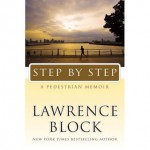
. . . a monster was born. Actually, that’s a bit of a stretch. The truth is, on this day in 1797, the woman who unleashed a fictitious monster into the world was born. Mary Wollstonecraft Shelley, the creator of Frankenstein, entered the world in London, England. Why talk about someone born so long ago? Because Mary Shelley was responsible for singlehandedly changing the trajectory of storytelling as we know it.
Frankenstein is considered the world’s first science fiction novel. Published when Shelley was only twenty-one, Frankenstein raises questions about the origins of good and evil, the existence of God, the impact of solitude, and human nature’s tendency to judge others by appearance. More than 200 years after it first appeared, the story of Frankenstein is still considered universal and timeless. In fact, Frankenstein is one of the most adapted novels of all time.
Stories abound as to Shelley’s inspiration for the tale. Some say she created it after having a nightmare. Others suggest it was inspired by terrible global events. 1816 was famously known as the ‘Year Without a Summer.’ The eruption of Mount Tambora in Indonesia triggered massive and sudden climate change, sending temperatures in Europe lower than they’d ever been (and the record for those low temperatures held from 1766 to 2000!). Those low temperatures, coupled with ongoing heavy rain, resulted in crop failures and the largest famine of the 19th century. It was during this gloomy time that Mary and her husband, Percy Shelley, vacationed in Switzerland with Lord Byron and a number of other friends. Forced to spend most of their time inside, Lord Byron suggested they all write ghost stories to share with one another. And that, as they say, is history.
True or not, it makes for an interesting piece of trivia about a story that has become a classic.

















Comments